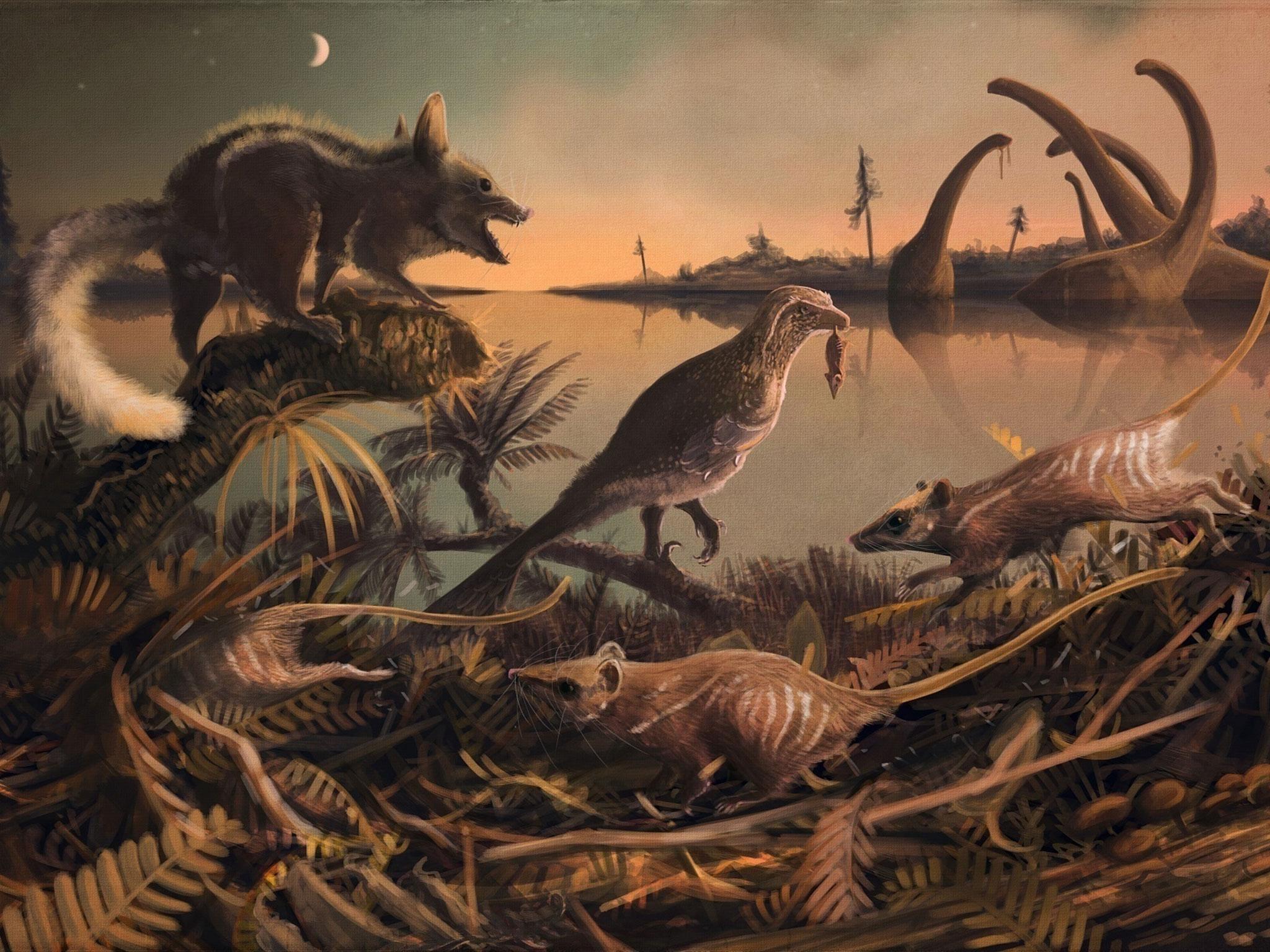Teeth of oldest known human ancestor discovered in Dorset
Scientists believe they can draw a direct evolutionary line from the ancient mammals to humans

Fossilised teeth belonging to the oldest-known ancestors of humans have been discovered in Dorset.
Remains of two rat-like creatures were sifted out of samples of Cretaceous period rock collected from exposed cliffs near Swanage.
The small furry animals scurried in the shadow of the dinosaurs 145 million years ago.
Scientists believe they can draw a direct evolutionary line from the ancient mammals to humans living today.
Dr Steve Sweetman, from the University of Portsmouth, said his "jaw dropped" when one of the university's undergraduate students asked him to look at the specimens.
He said: "The teeth are of a type so highly evolved that I realised straight away I was looking at remains of Early Cretaceous mammals that more closely resembled those that lived during the latest Cretaceous, some 60 million years later in geological history.
"In the world of palaeontology there has been a lot of debate around a specimen found in China, which is approximately 160 million years old. This was originally said to be of the same type as ours but recent studies have ruled this out. That being the case, our 145 million-year-old teeth are undoubtedly the earliest yet known from the line of mammals that lead to our own species."
The area where student Grant Smith found the teeth is known as the Jurassic Coast because it has produced so many dinosaur fossils.
Both the ancient mammals were probably nocturnal, Dr Sweetman and co-authors reported in the journal Acta Palaeontologica Polonica.
One was likely to have been a burrower that ate insects. The other larger creature may have consumed plants as well.
Dr Sweetman added: "The teeth are of a highly advanced type that can pierce, cut and crush food.
"They are also very worn which suggests the animals to which they belonged lived to a good age for their species - no mean feat when you're sharing your habitat with predatory dinosaurs."
The animals are believed to be direct ancestors of most mammals living today, including creatures as diverse as the blue whale and pigmy shrew, as well as humans.
One of the species has been named Durlstotherium newmani, after Charlie Newman, landlord of the Square and Compass pub in the village of Worth Matravers close to where the fossils were discovered.
The other has been named Durlstodon Ensomi after Paul Ensom, a local palaeontologist.
Additional reporting by PA
Subscribe to Independent Premium to bookmark this article
Want to bookmark your favourite articles and stories to read or reference later? Start your Independent Premium subscription today.

Join our commenting forum
Join thought-provoking conversations, follow other Independent readers and see their replies